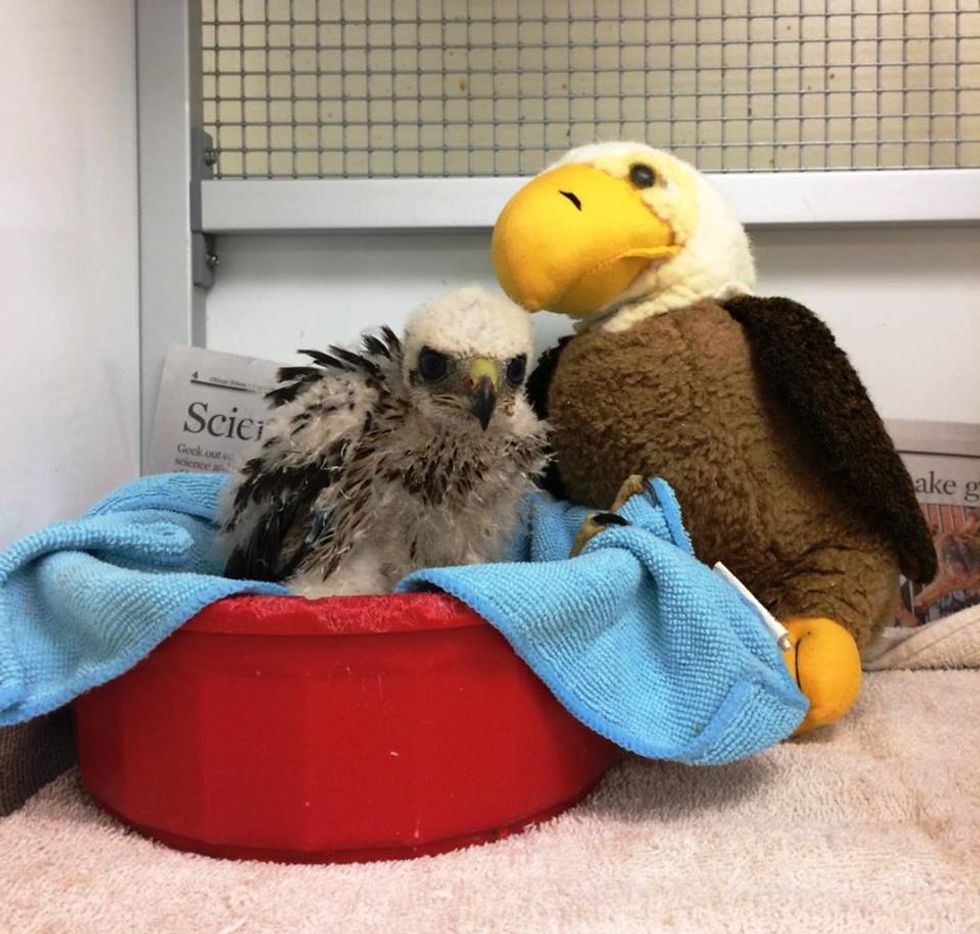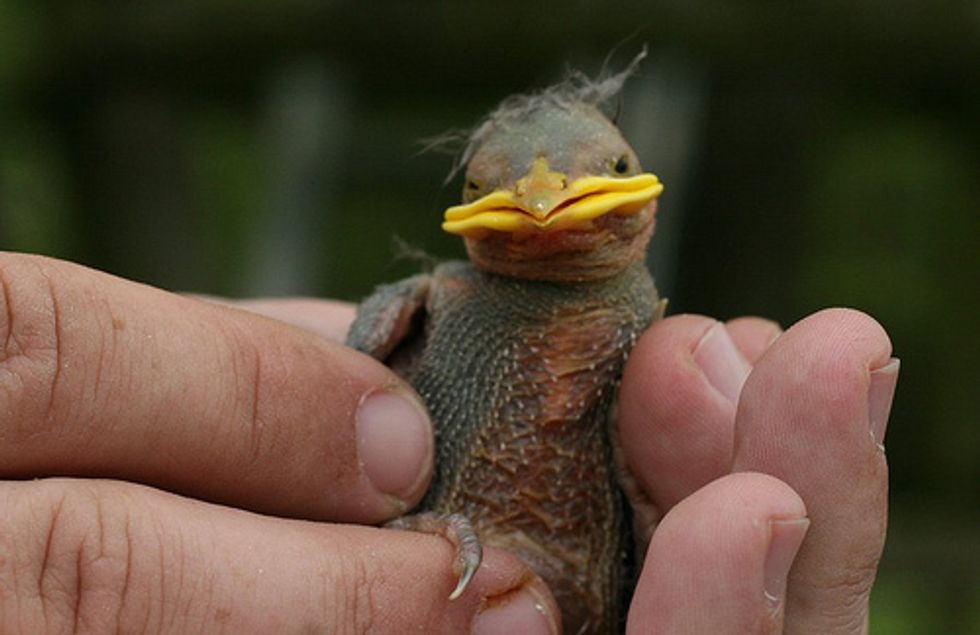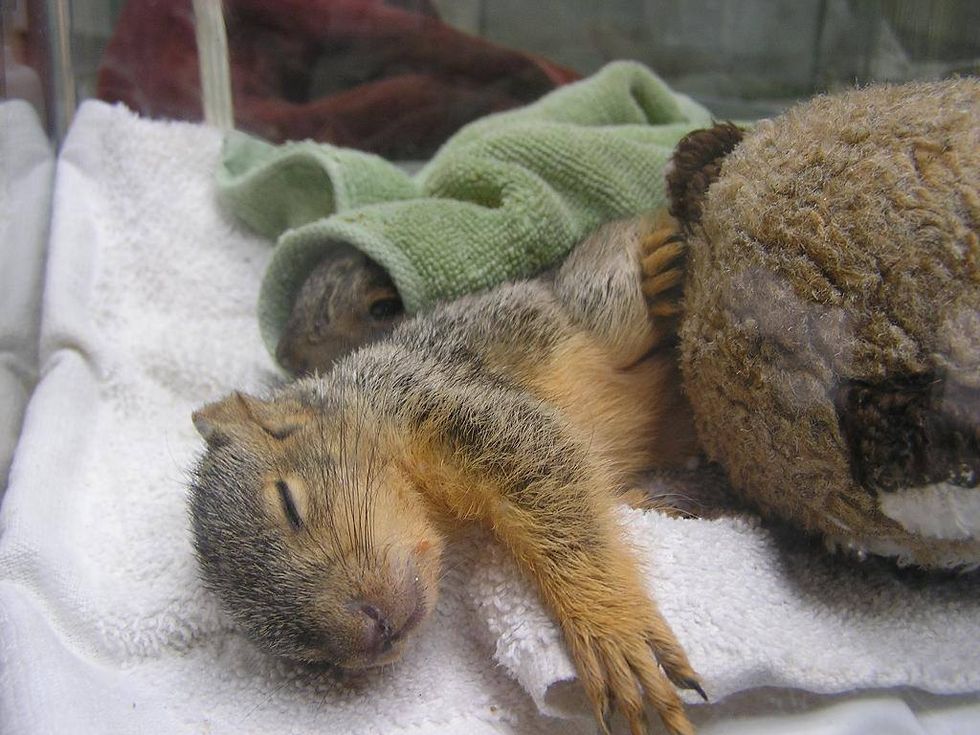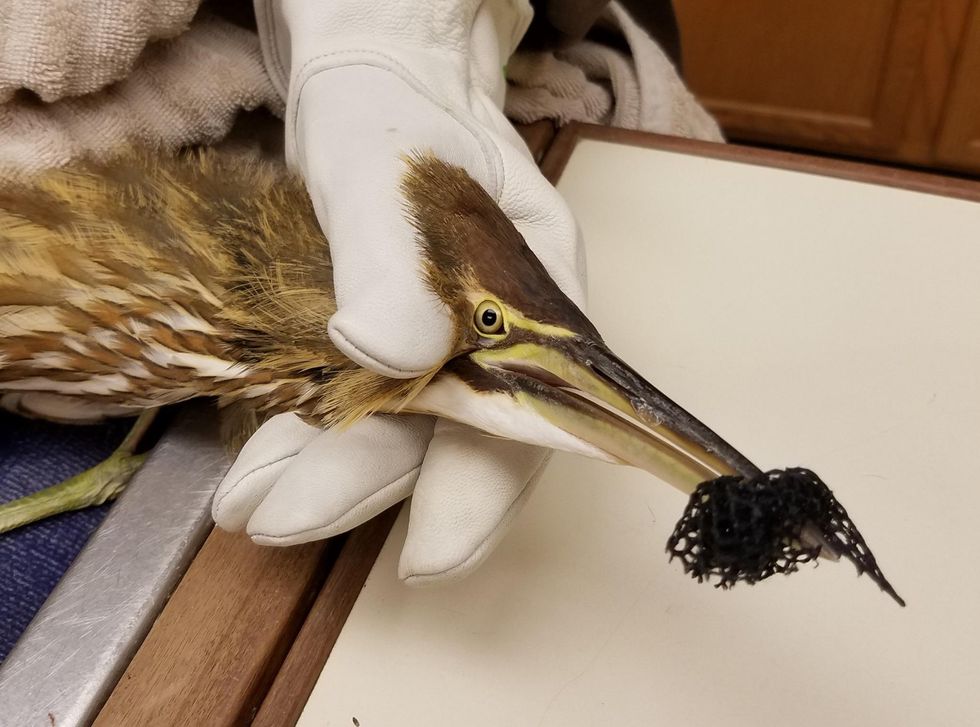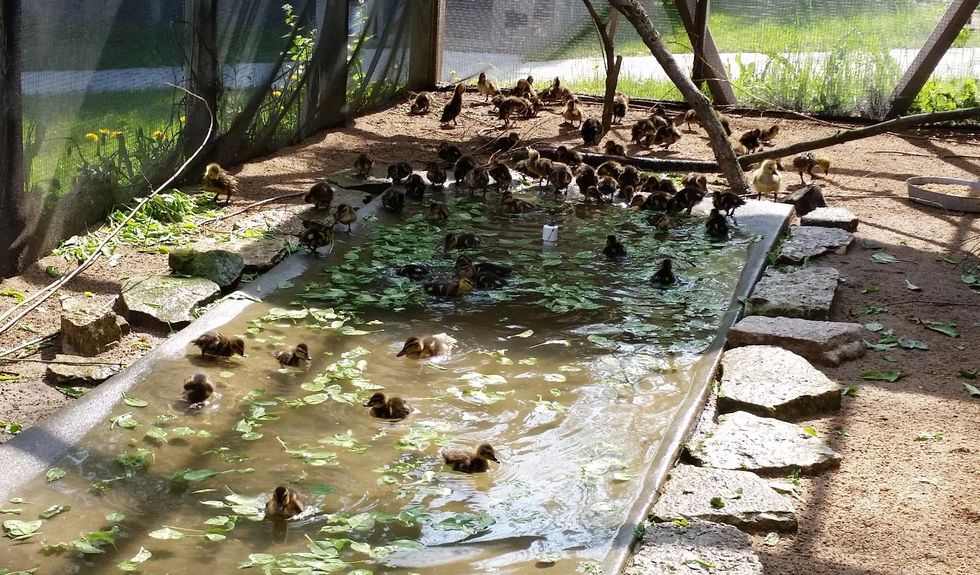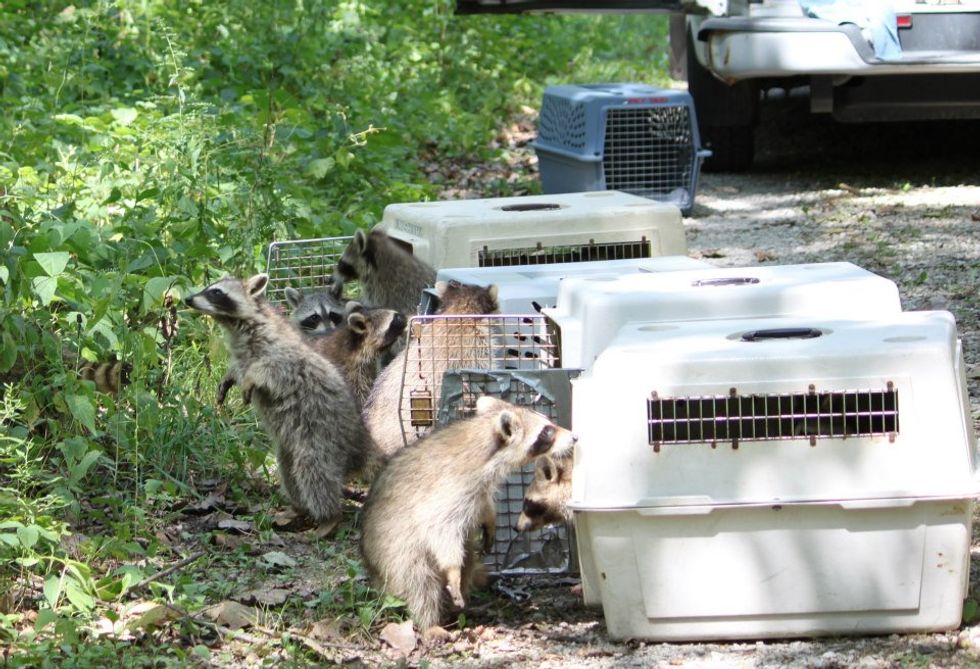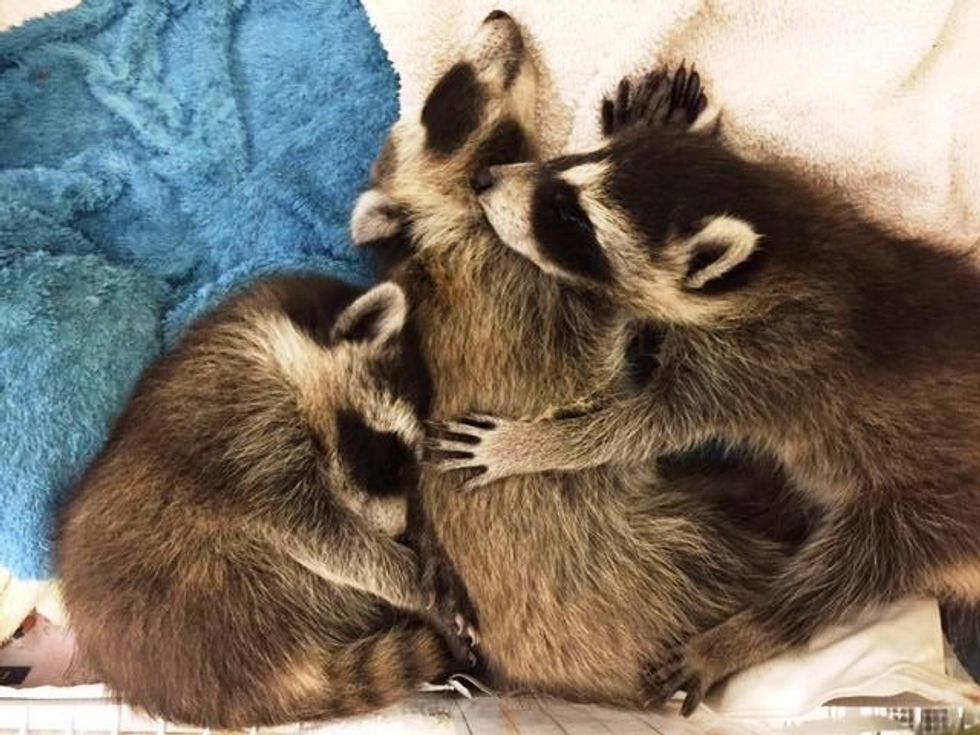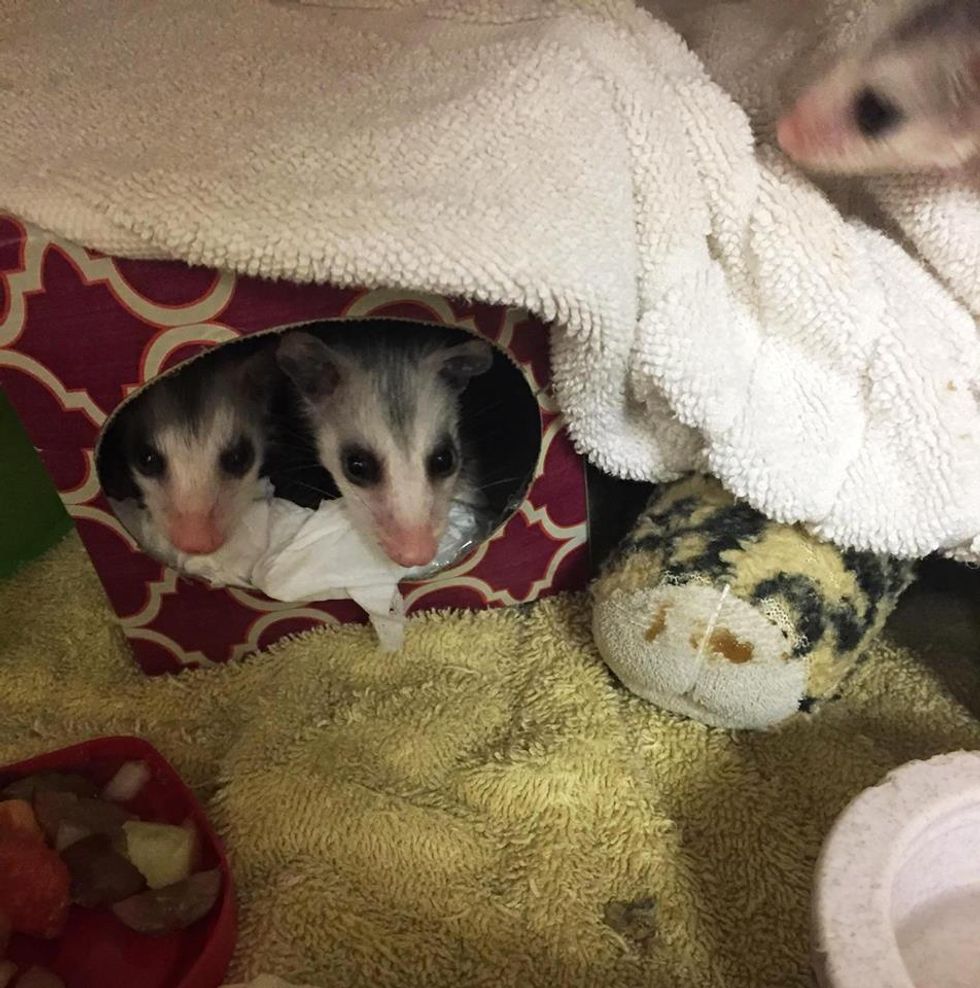For all students, especially those whose career goals require graduate school, internships are crucial. Having already done an internship at a small animal hospital, I wanted to pursue something a little more off the grid in order to diversify my vet school application. I started applying to internships at zoos because I wanted experience with animals other than cats and dogs. Fortunately, I found a wildlife rehabilitation center close to my house and secured a summer internship. I knew that this was going be a unique opportunity, but I never could have anticipated how much I would learn or how much love and appreciation I would grow to have for my coworkers and the work itself.
Here's just a few of the many things I took away from my work this summer:
1. You have to have a strong stomach to work with wildlife
When you volunteer or intern at an animal hospital or shelter, you generally only serve dog and cat chow. While many wildlife diets are made using dog or cat chow/formula as a base, the chow does not contain all the different nutrients dozens of wildlife species need to grow and thrive.
Often times, wild animals need a source of raw protein in their diets; which is given in the form of frozen mice, rats, quail, fish, or specially designed loafs of 'mystery meat'. Since most wildlife in rehab centers are young, these mice, rats, etc. have to be cut into small pieces and strewn about the cage which would make most people squeamish. If raw meat wasn't enough, there are also containers full of different types of insects laying around (mealworms, wax-worms, crickets, etc) that can rival Fear Factor challenges.
It doesn't end with the delicious delicacies previously mentioned. All of us have seen the mess that geese make in fields; now imagine the damage a goose with a broken leg in a small kennel could do...and multiply that by 500 more kennels containing anything from a snapping turtle to six opossum babies.
P.S. Raccoons love to smear their food all over the walls like cave paintings.
2. The most pathetic-looking fledglings (baby birds) can turn into the most beautiful adults
Everyone has gone through their awkward stage with braces and strange-colored highlights galore, and so do birds. They come into this world covered in transparent pink skin, and it takes awhile for their adult feathers to come in.
When they're still naked, it's surreal to flip them over and see their insides moving and working right below their skin; so fragile and unprotected. The first feathers that grow are called blood feathers and have thick stalks that are connected to a blood supply (hence the name). In short, they stick out at all sorts of funny angles and give the birds a distinct 'ugly duckling' look that is impossible not to laugh at.
But before you know it, these baby birds start sprouting crazy and beautiful feathers; vibrant blues and reds, polka dots, and stripes. Even birds that appear to be just brown, like a mourning dove for example, have iridescent feathers that reflect a multitude of shades up close. It's a good reminder that the rough stages never last; you'll grow out of them with time.
3. A small army is needed to run a wildlife rehab center
About 10,000 animals came through the rehab center I interned at in the 3 months I was there with most of them orphaned or injured babies. Making sure that all of these animals are fed, clean, and watered is no small feat; sometimes I'm surprised there's even enough hours in the day.
The babies demand the most attention, with some of them needing to be fed every 30 minutes starting at 5 am. By the time you've warmed up the formula and syringe fed each of the 40 baby squirrels, it's time for the next round; with no time for anything else.
Some of the really small babies cannot even go to the bathroom on their own, and must be 'piddled' or stimulated with a wet paper towel after each feeding to help them go to the bathroom. With only about 10-15 employees/interns working at a time, you get very good at multitasking but can still barely stay ahead of the riptide. Volunteers are life-savers.
While you're barely staying on top of all of the feeding, cleaning, watering, and piddling, volunteers are cleaning dishes, folding the laundry, preparing food, and helping out as much as they can.
It really does take a village to raise a wild animal.
4. We have more of an impact on native wildlife than we think
Driving down the road, it is not out of the ordinary to see more than one raccoon or opossum as roadkill. Since summer is baby season, these flattened animals were most likely mothers whose babies wander into someone's yard and are (hopefully) brought to wildlife rehab centers.
There have been many cases of animals brought in with bullet wounds, broken wings and legs, tangled in nets, hooked with fishing line, and poisoned with insecticides that made their way into water. There's even a movement called the Chicago Bird Collision Monitors, that heads out into the city early in the morning to pick up birds off the sidewalk that have crashed into buildings and bring them to wildlife rehabilitation centers nearby.
Regardless, we all need to be a little more mindful of the environment that we share with other living creatures. It can be something as simple as picking up your broken fishing lure instead of chucking it into the water, making sure your bottle caps get into the trashcan, and slowing down if you can when a wild animal is crossing the roads we have built in their habitat.
5. You can't save every animal that comes through the doors
It's hard to understand sometimes why something so small and innocent doesn't get to live; why it never gets the chance to grow up and have a chance at living in the wild.
Some babies just come in too weak, and no amount of formula or heat lamps can fix that. Some babies thrive in the rehab center, loving the constant meals, enrichment, and their other animal buddies. Others don't, refusing food and water until they eventually die or their injuries prove too extensive that we can't justify letting them suffer any longer and put them down.
Some baby ducklings get too daring and jump out of their brooding boxes, snapping their tiny necks. Some baby squirrels stick their entire faces into their food bowl and end up aspirating formula into their lungs. As much as you want to save every animal that comes through those doors, it's not possible. And instead of getting upset over the ones that don't make it, you have to learn how to focus your attention on the ones still there that need to be cared for.
6. But, it is incredibly rewarding when you get to release the ones that you do save
While it is incredibly hard to watch some animals pass away, the truth is none of the 10,000 animals that came through the door this summer would have made it without being admitted into the wildlife rehabilitation center. However, thousands of these animals get to be released throughout the summer.
Nothing beats the feeling of carrying a box of opossums into the middle of a forest preserve on a humid summer day, and opening the door... Watching their little pink noses sniff the fresh air before one decides to take a tentative step outside. Before you know it, they are already all dashing through the tall grass in search of insects, ready to enjoy whatever time they have where they actually belong.
If you would like to help support the wildlife rehabilitation center that I worked at this summer, here is their amazon wishlist link for the supplies that they are currently in need of. Even bringing in donations to your local wildlife rehab center is much appreciated; a bottle cap can become a water bowl for a baby bird, a yogurt cup can hold formula, and a peanut butter jar lid can serve as a meal dish.


